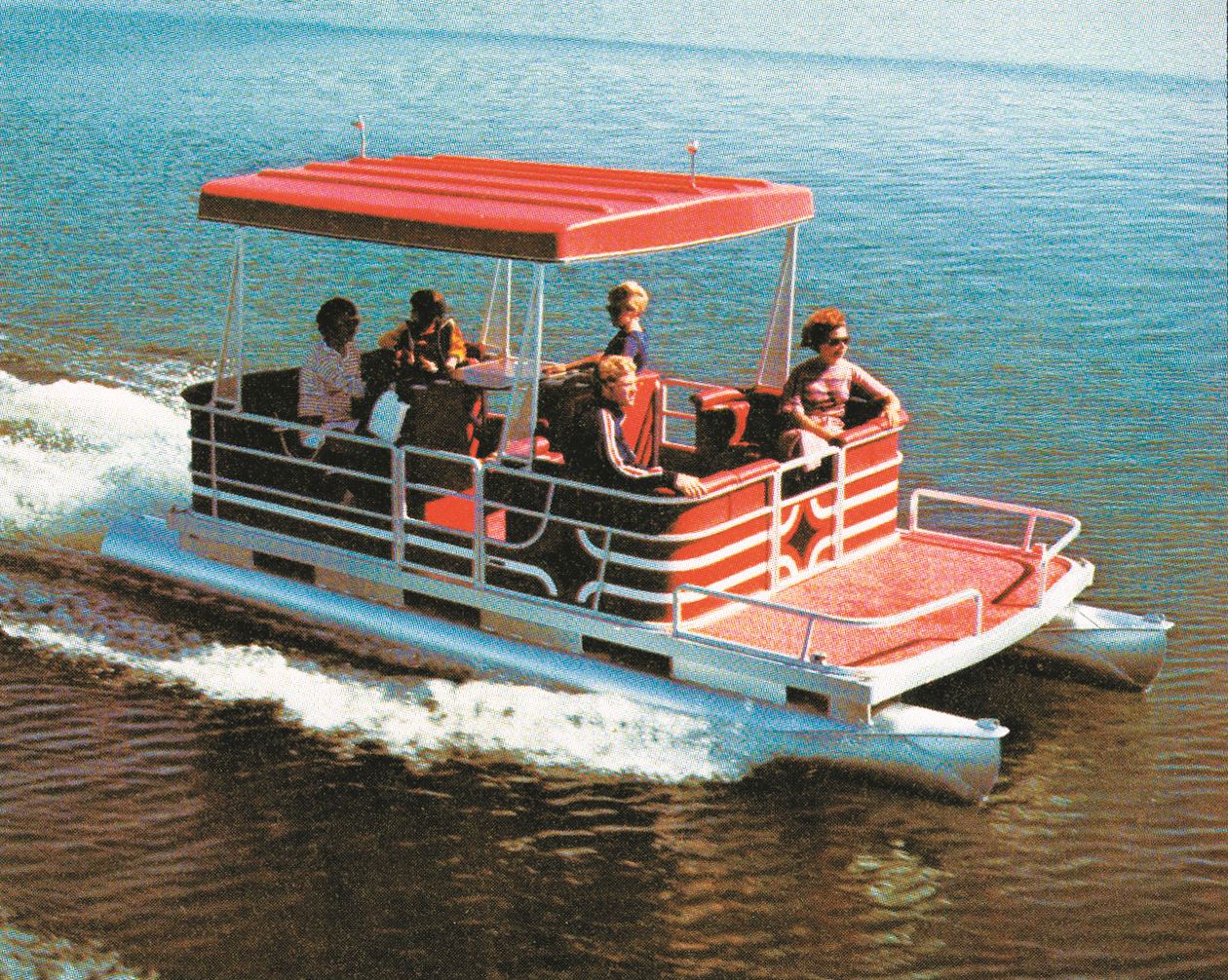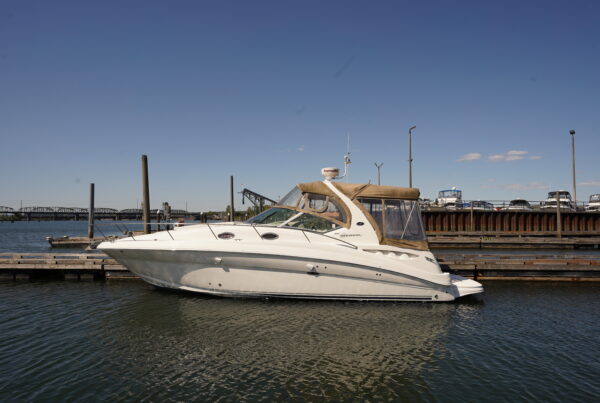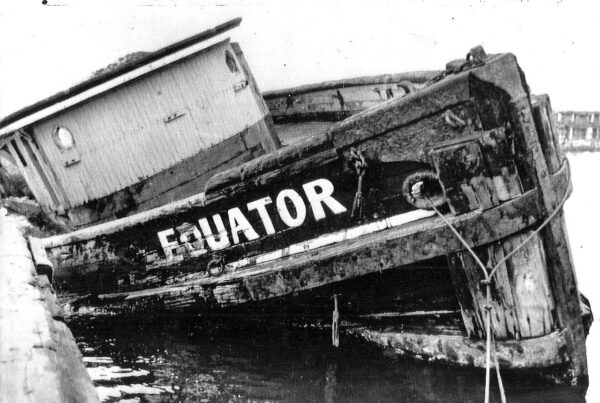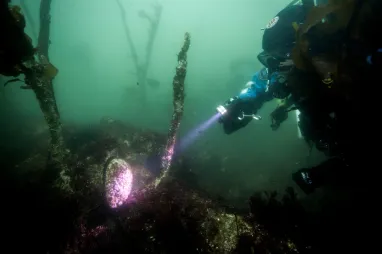Part 1: The Pontoon Boat Roots
Like a hidden gem waiting to be discovered, the pontoon boat and its rise to prominence on inland lakes is a tale worth unraveling.
Our story begins in the early 1950s when a group of innovative minds sought a vessel that could navigate the calm waters of lakes and rivers while providing stability and comfort. They envisioned a craft that combined the features of a conventional boat and a raft, thus birthing the concept of the pontoon boat.
At the forefront of this vision was Ambrose Weeres, a Minnesota farmer who recognized the need for a boat that would allow him and his family to leisurely enjoy the local lakes. Weeres set out to create a watercraft that prioritized stability and ease of use, envisioning a platform-like structure that could glide gracefully on the water.
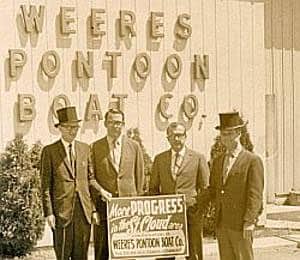
After months of experimentation and refinement, Weeres introduced the world’s first pontoon boat in 1951. His creation featured two cylindrical pontoons or “logs” positioned parallel to each other beneath a flat deck. The simplicity of the design allowed for easy construction and maintenance while ensuring remarkable stability.
Weeres’ pontoon boat quickly gained attention and popularity among his friends and neighbors. The concept of a stable, versatile watercraft for inland lakes resonated with many who sought to enjoy the serenity of these bodies of water without the complexities of traditional boats.
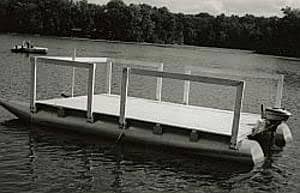
Weere’s Wildlife Invention
Word of Weeres’ invention spread like wildfire, and soon, other boat manufacturers caught wind of the pontoon boat’s potential. Inspired by Weeres’ innovative design, companies like Harris FloteBote and Manitou began producing their own versions, further fueling the pontoon boat’s rise.
Throughout the 1950s and 1960s, pontoon boats continued to evolve. Manufacturers introduced various modifications, such as improving seating arrangements, adding sun decks, and incorporating amenities to enhance comfort and entertainment options. These advancements transformed the pontoon boat from a simple floating platform to a luxurious and versatile vessel.
As the years went by, pontoon boats gained popularity beyond the shores of Minnesota. Boating enthusiasts across the United States and beyond recognized the appeal and practicality of this unique watercraft. Its ability to navigate inland lakes with ease and offer a spacious and stable platform for various activities attracted a growing number of individuals and families.

The pontoon boat’s journey began with Ambrose Weeres’ vision to create a stable and comfortable vessel for inland lake exploration. From its humble origins in the early 1950s, the pontoon boat gradually gained recognition, captivating boating enthusiasts worldwide. The simplicity of its design, combined with continuous improvements and adaptations, propelled it to become the king of inland lakes, offering unmatched comfort, versatility, and enjoyment for all who set foot on its deck.
Part 2: The Pontoon Boat – Ascending to Inland Lake Royalty
Now, let’s dive into the factors that propelled the pontoon boat to its reign as the king of inland lakes.
Evolution of Design:
Over the years, pontoon boats underwent significant design advancements, transforming from basic platforms into luxurious floating paradises. Manufacturers recognized the growing demand for comfort and sophistication and began incorporating lavish amenities and features into their pontoon boat designs.
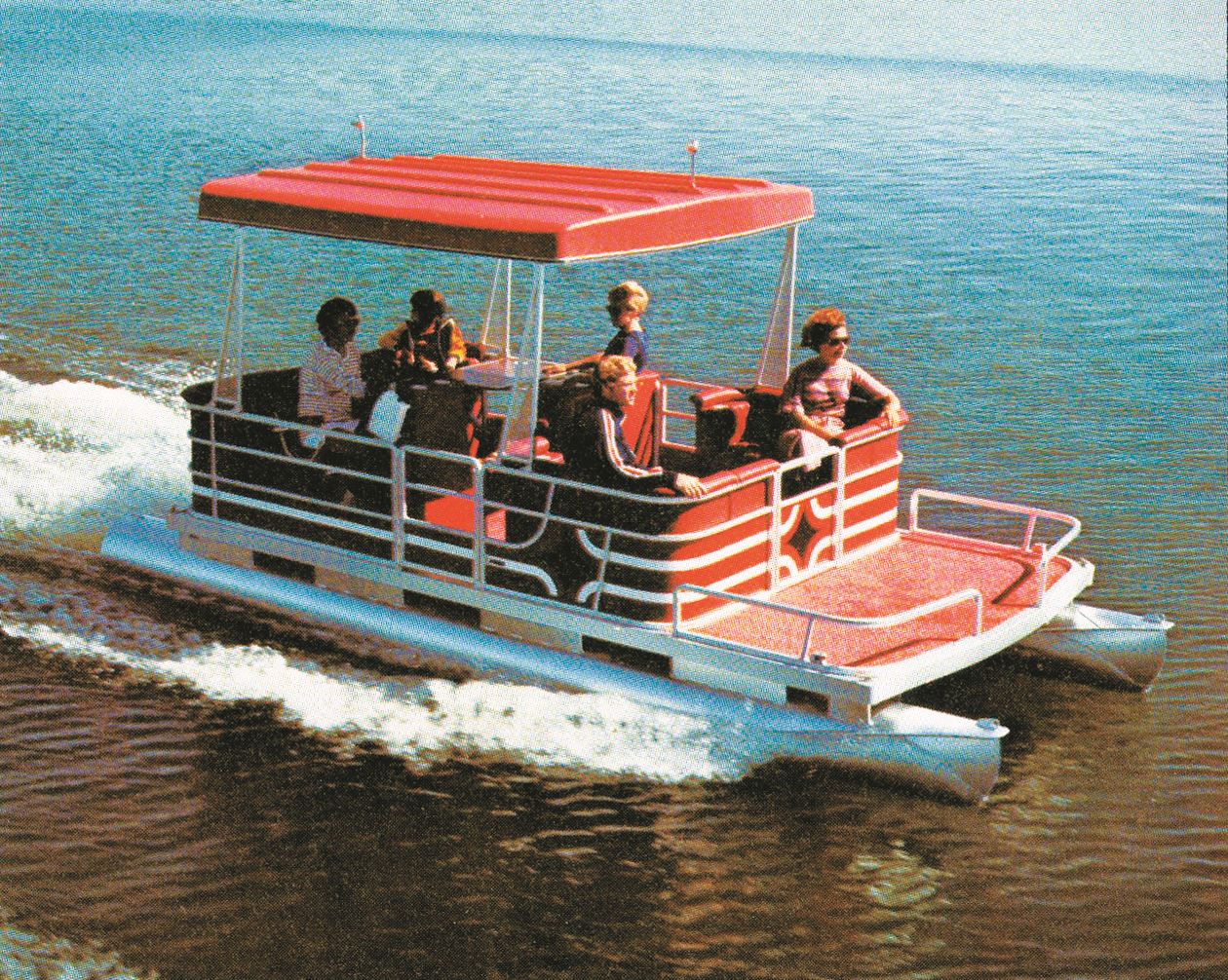
Plush seating became the norm, providing passengers with unparalleled comfort. Entertainment systems, including high-quality speakers and multimedia capabilities, added an element of enjoyment and relaxation. Some pontoon boats even boasted wet bars, enabling boaters to mix refreshing beverages and savor the on-water experience.
To cater to those seeking ultimate convenience, certain models even featured onboard bathrooms, further enhancing the comfort and convenience of passengers. These advancements in design elevated the pontoon boat from a simple recreational vessel to a lavish haven on the water, attracting a wider audience seeking refined leisure experiences.
Pontoon Boat Versatility:
One of the key factors that contributed to the pontoon boat’s rise as the king of inland lakes was its exceptional versatility. These boats excel in a multitude of activities, accommodating the diverse demands of lake-goers.
For fishing enthusiasts, pontoon boats provide ample deck space, allowing for comfortable casting and reeling in the day’s catch. Water sports enthusiasts find pontoon boats ideal for towing activities such as tubing, water skiing, and wakeboarding, thanks to their stable platforms and powerful engines. The spacious decks are perfect for hosting parties and social gatherings, where families and friends can bond and celebrate special occasions.
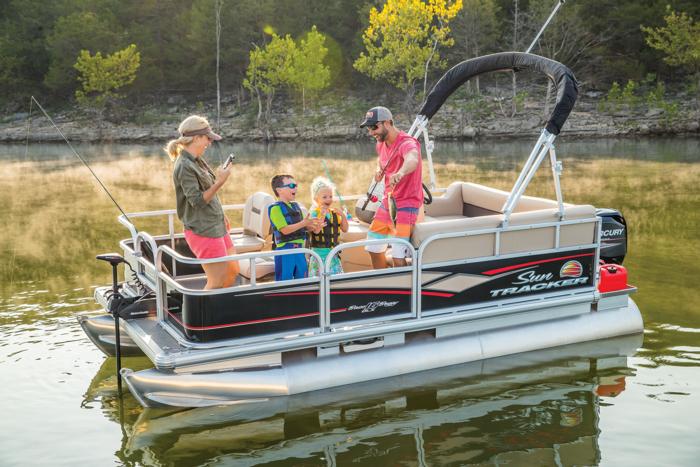
Moreover, for those seeking a serene and relaxing experience, pontoon boats offer a tranquil escape amidst the natural beauty of inland lakes. Their versatility makes them suitable for a wide range of activities, attracting individuals and groups with varying interests, and solidifying their position as the go-to vessel for lake adventures.
Ease of Use:
The user-friendly nature of pontoon boats played a significant role in their ascent to inland lake royalty. Unlike more complex watercraft, pontoon boats are relatively simple to operate, making them accessible to a broad spectrum of individuals, including novice boaters and families.
Maneuvering a pontoon boat requires minimal experience or technical skill, allowing even beginners to navigate inland lakes with confidence. Additionally, pontoon boats boast shallow drafts, meaning their pontoons are not deeply submerged in the water. This feature enables them to traverse shallow waters without difficulty, expanding the range of exploration possibilities on inland lakes.
The ease of use and navigational simplicity offered by pontoon boats have attracted countless individuals who seek a hassle-free boating experience while still enjoying the beauty and tranquility of lakes.
Social Appeal of the Pontoon Boat:
Pontoon boats foster a sense of community on inland lakes, creating an environment that promotes social interaction and shared experiences.
Their spacious decks and seating capacity accommodate large gatherings, allowing families and groups of friends to come together and create lasting memories. Whether it’s a weekend barbecue, a sunset cruise, or simply a day of relaxation, pontoon boats provide an inviting and convivial atmosphere. The communal aspect of pontoon boat culture has become an integral part of lake life, as boaters can easily connect with others, share laughter, stories, and forge new friendships.

The social appeal of pontoon boats, combined with their comfort and versatility, has solidified their position as the kings of inland lakes.
Part 3: The Pontoon Boat Reign Continues
Our journey into the fascinating history of the pontoon boat, from its humble beginnings to its ascent as the king of inland lakes, leads us to the present day. As we witness the continued reign of this remarkable watercraft, let us reflect on the factors that have contributed to its enduring popularity and success.
Tracing the pontoon boat’s roots, we discovered the visionary mind of Ambrose Weeres, a Minnesota farmer who sought a vessel that could navigate calm waters while providing stability and comfort. In the early 1950s, Weeres brought his vision to life, introducing the world’s first pontoon boat. With its simplistic design featuring parallel pontoons beneath a flat deck, it quickly captured the attention and admiration of lake-goers.
Evolution of the Pontoon Boat
As the years unfolded, the pontoon boat underwent a remarkable evolution, fueled by the passion and creativity of boat manufacturers across the nation. Design advancements turned these boats from basic platforms into floating paradises. Luxurious amenities such as plush seating, entertainment systems, wet bars, and onboard bathrooms became standard features, appealing to those who sought refined leisure experiences on the water.

The pontoon boat’s versatility played a crucial role in its rise to inland lake royalty. It effortlessly adapted to the diverse demands of lake-goers, excelling in activities such as fishing, water sports, hosting parties, and unwinding amidst serene natural surroundings. Its ability to cater to various interests attracted a wide range of individuals and families, solidifying its position as the go-to vessel for lake adventures.
But it was the ease of use and user-friendly nature of pontoon boats that truly set them apart. Novice boaters and families found comfort in their simplicity, as operating a pontoon boat required minimal experience or technical skill. The shallow drafts allowed for easy navigation in shallow waters, expanding the possibilities of exploration on inland lakes.
As pontoon boats became a staple on inland lakes, they fostered a sense of community and social appeal. Their spacious decks accommodated large gatherings, encouraging boaters to connect, share laughter, and create lasting memories. The convivial atmosphere that surrounded pontoon boats further solidified their reign as the kings of inland lakes.

The Pontoon Boat Today
Today, the reign of the pontoon boat continues, unyielding in its dominance. These vessels have become synonymous with lake life, embodying comfort, versatility, and the gateway to unparalleled on-water experiences. With each passing year, new advancements emerge, pushing the boundaries of design and technology, ensuring that pontoon boats remain at the forefront of recreational boating.
As we observe the pontoon boat gracefully gliding across the tranquil waters of inland lakes, we witness its reign and the profound impact it has had on the lives of boating enthusiasts. It is a testament to the enduring appeal and unwavering reign of this remarkable watercraft.
So, whether it’s families embarking on leisurely cruises, fishing enthusiasts casting their lines, water sports enthusiasts seeking thrills, or friends gathering for a memorable party on the water, the pontoon boat stands tall as the reigning monarch, delivering comfort, versatility, and the promise of cherished moments on the picturesque inland lakes.

